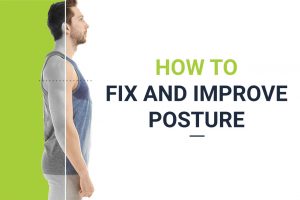How to fix and improve posture

Your spine allows you to stand upright, bend, twist, and most importantly, it protects your spinal cord from injuries. Your spine is stabilized with different softer and harder tissues such as muscles and bones. Having proper posture helps reduce strain on your spine, and on the muscles and bones throughout your entire body. Plus standing up tall always conveys more confidence!
How do we achieve proper posture? Proper posture results when your muscles are flexible enough to have a good range of motion yet are strong enough to ensure your spine has stability through the range of motion. Here are some tips to help achieve flexibility and stability needed for proper posture:
1) An active lifestyle. Different types of exercise (ex. Resistance training, Cardio, Yoga etc.) can help strengthen your muscles, stabilize your spine, increase flexibility and increase bodily awareness to help improve your posture.
2) Maintain a healthy weight. Asides from being connected to many illnesses, extra weight can put pressure on your spine and can weaken your muscles.
3) Be mindful of your posture. Taking a minute before performing everyday activities such as walking, watching TV or even putting on our shoes, to ensure you are not over reaching or twisting in a abnormal way.
Below are the steps to getting into proper posture:

1) Keep your chin retracted (push it backwards).
2) Pull shoulders back and down (like your holding a pencil between your shoulder blades).
3) Push chest forwards (stand prideful and tall!).
4) Posterior pelvic tilt (roll and lift your belt buckle towards your head).
5) If seated, ensure that your elbows are below your shoulders and your knees are below your hips.
Remember, proper posture isn’t just when you are sitting down, you can (and should) strive to have proper posture whenever you are moving. It will reduce the chances of an injury and you’ll better doing it!

